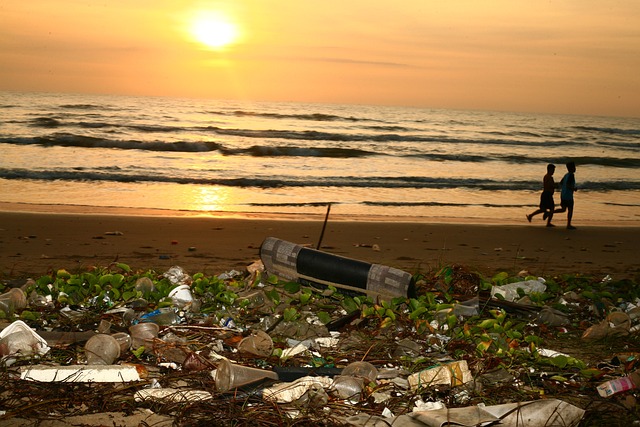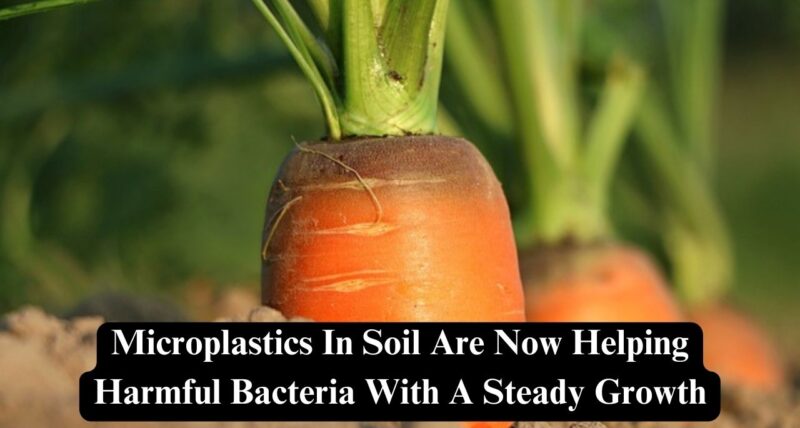Plastics are a steady part of the modern farming culture. There are PVC pipes that help drain water from the fields, plastic mulch used to line up the vegetable beds, and the packaging that goes into seeds and fertilizers. However, the twist is that with time, these plastics have penetrated beyond the surface level and are now a part of the agricultural soil in the form of nanoplastics and microplastics. Research team finds, over time, these microplastics in soil have become steady support for harmful bacteria. Which have now upscaled their chemical resistance to regular pesticides and insecticides already available. Continue reading through the blog to find out how is that exactly possible. And why plastic extraction is a difficult process for the researchers to conduct.
Why Are Plastics Such A Hazard?
Since the 1950s, there has been a total production of 8.3 billion tons of plastics globally. According to records, 60% of the plastics have found their way into landfills. When mixed with the soil, a plastic water bottle takes 450 years to completely disintegrate. That means we are heading to a time when there will be more plastic and less soil. The list just continues, justifying why plastics are such a hazard.

So far, 700 marine organisms like seabirds, turtles, whales, and fish have consumed plastics. With many species being subjected to questionable endanger. If the situation continues, by 2050, more plastic will be in the ocean than fish. Even if the big plastic chunks are filtered out from the water and soil, the microplastics are the ultimate problem.
The microplastics are carcinogenic. That means they can cause cancer in the lives living with them. Also, the same is responsible for promoting the spread of harmful bacteria in marine life and agricultural fields. Overall, it is quite a stressful situation that one needs to mitigate steadily.
Microplastics In Soil Helping Harmful Bacterial Growth
A team of researchers has come up with a study indicating how microplastics and nanoplastics are now a part of the agricultural soil, helping with harmful bacterial growth. It is not new that microplastics have been making our lives difficult for the longest, but now they have started entering the food system.
The Background
According to the researchers, the plastic itself might not be toxic but acts as a vector, helping with the entry and growth of bacteria in the soil. For a long time, the phenomenon was not known to people, but the team focused on raising the ultimate awareness.
The microplastics in soil are an excellent absorbent of chemical substances and other microscopic organisms. These counts in the chemicals that would otherwise seep through the soil quickly. But now, sticks to plastics and accumulates with time, making for concentrated levels.
On the other hand, you have the bacteria and microorganisms being able to cogenerate at a steady rate on the surface of these firm microplastics in soil. Together, they form a biofilm with high toxins and harmful bacterial substances.
The Reaction
The study also highlights that when bacteria growing over the microplastics in soil come in contact with the concentrated chemicals that have accumulated simultaneously, they release stress response genes. These special gene formats bless the bacteria with a steady and powerful immunity against the surrounding chemicals and pre-existing antibiotics.
Now, several bacterial groups, when living together, share the stress response gene through horizontal gene transfer. So, over time, the number of harmful bacteria immune to insecticides, pesticides, and antibiotics increases. In the long run, all these can lead to steady damage to the food production system.
Why Is That A Difficult Problem To Get Rid Of?
Researchers have also encountered the gene transfer process in bacteria as part of the water cycle. But the same so far was merely hypothetical in the agricultural aspect. However, the study now does offer some concrete details, attracting eyeballs from other researchers.
However, people ask why microplastics in soil make such a fuss and why we just cannot get rid of them. As an answer, fellow researchers highlighted soil as a difficult medium to handle. Unlike water, it is not easy to filter out plastics from the soil.

Coming to the part why this certain bacterial immunity is a big problem? The research team highlighted that food-borne pathogens are easily visible and can be manually dismantled. However, these bacteria groups are small enough to enter the plant’s roots, possibly impossible to wash away.
Because the mode of study is quite new, the team is working their best to develop steady solutions in the game. However, they confirmed that soil and environment microplastics are here to stay. So, rather than planning on something that will help them discard the microplastics, one should work towards more biodegradable alternatives to plastics.




